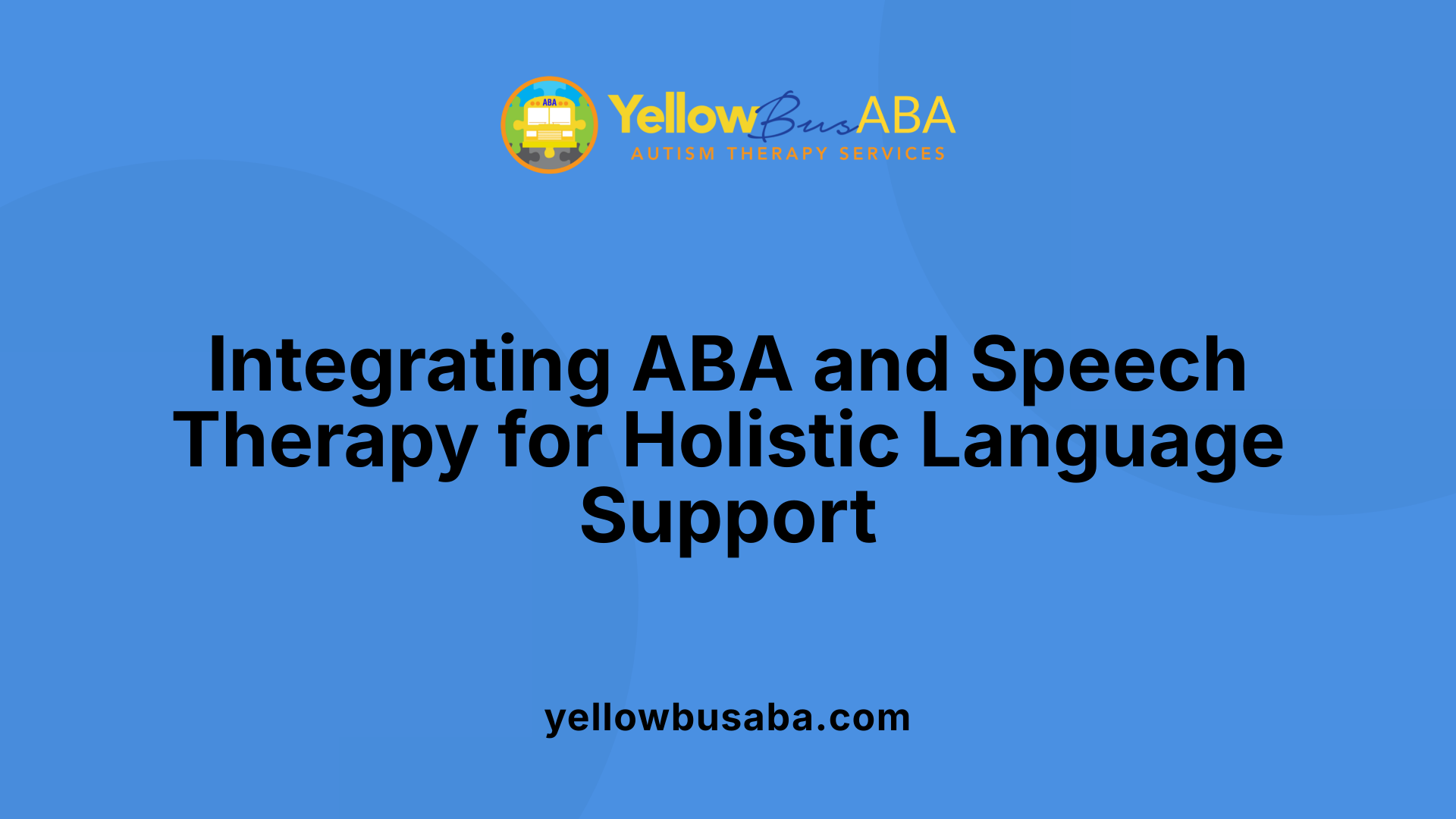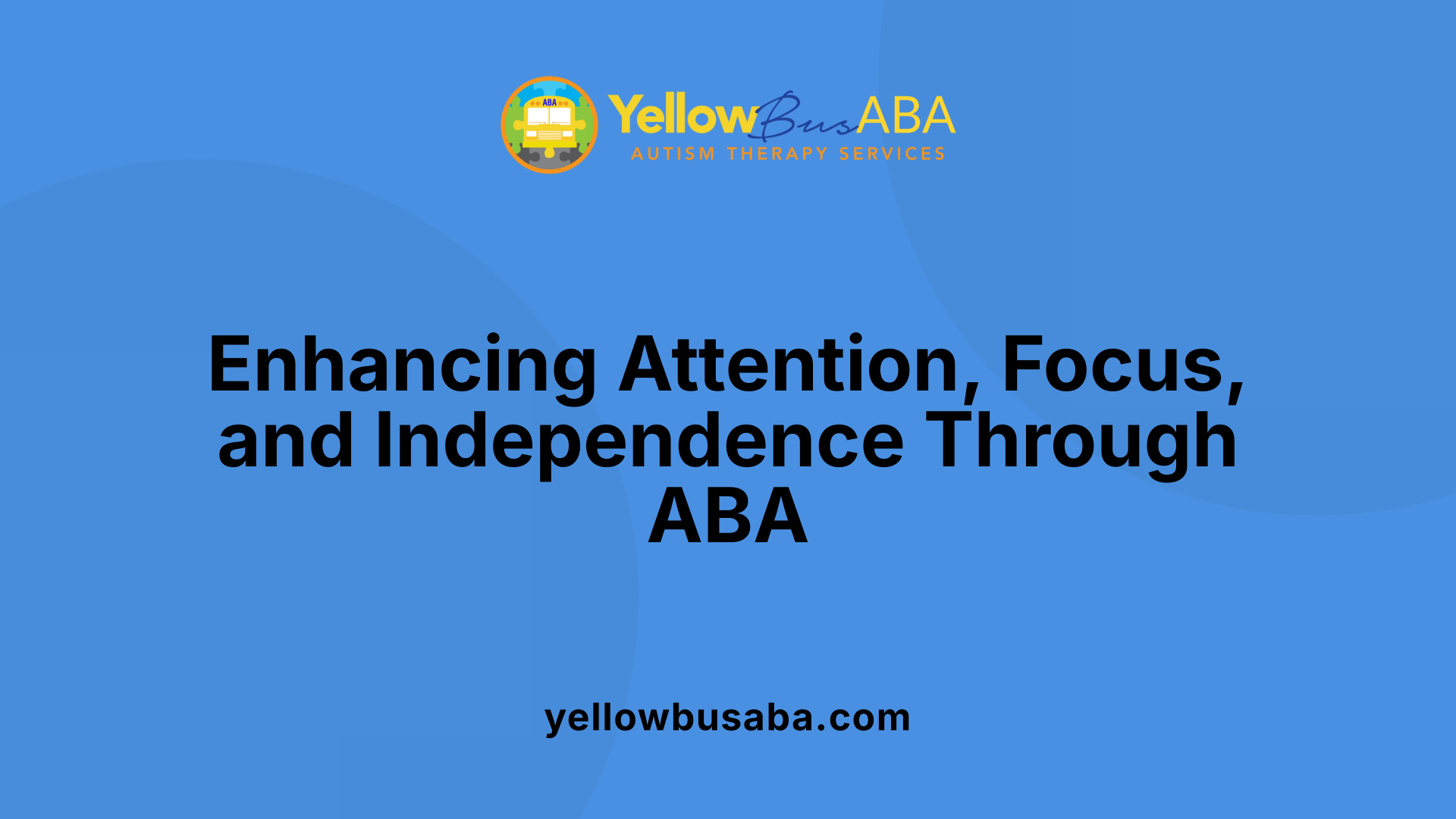The Connection Between ABA Therapy and Language Development
October 2, 2025
Unlocking Communication: How ABA Therapy Boosts Language Skills in Children with Autism

Understanding the Critical Link Between ABA and Speech Development
For children with autism spectrum disorder (ASD), developing effective communication skills is often a key focus of therapeutic interventions. Applied Behavior Analysis (ABA) has been widely recognized for its role in enhancing language and social skills. This article explores the connection between ABA therapy and language development, shedding light on how this evidence-based approach fosters meaningful communication and supports the overall growth of children on the spectrum.
The Fundamental Role of ABA in Language Acquisition

What is the relationship between ABA therapy and language development in children with autism?
ABA therapy plays a central role in fostering language skills among children with autism. Its structured and systematic approach focuses on reinforcing meaningful communication behaviors, such as making requests, labeling objects, and responding to questions. Instead of just teaching labels or words, ABA emphasizes understanding the purpose behind language, which is vital for functional communication.
Using evidence-based techniques like positive reinforcement, ABA programs aim to motivate children to communicate voluntarily. Therapists often break down complex language skills into smaller, manageable steps—called shaping—to help children gradually improve their speech sounds, vocabulary, and conversational skills. In addition, employing verbal operants such as mand (requests), tact (labels), and intraverbal (responding to questions) targets essential communication functions.
Naturalistic teaching methods, including incidental teaching and pivotal response training, make learning more engaging by integrating communication opportunities into everyday activities. This encourages spontaneous use of language across different settings, promoting generalization and confidence.
When combined with speech therapy, ABA strategies enhance the child's ability to transfer skills to various environments, from home to school and social settings. Overall, ABA's data-driven techniques support meaningful language development by rewarding progress and addressing behavioral challenges that may inhibit communication. This systematic approach helps children with autism participate more fully in social interactions and daily activities, making communication a practical tool for their independence and inclusion.
Techniques and Strategies in ABA for Enhancing Communication
How does ABA therapy support the development of communication skills in children?
ABA therapy plays a crucial role in fostering communication abilities in children through a structured, step-by-step approach. It focuses on teaching both expressive and receptive language, tailoring interventions to each child's needs. One primary method is discrete trial training, which breaks down skills into small, manageable steps, making learning more achievable.
Key techniques include shaping and chaining, which help children gradually develop complex behaviors by reinforcing successive approximations or linking simple actions into a chain leading to a desired communication response.
Visual supports, such as picture exchange communication systems (PECS) and visual schedules, are frequently used to reinforce understanding and promote independence in communication. These supports help children learn to associate images with words or actions, making language more accessible.
ABA also encourages spontaneous language use and social interactions. Through naturalistic teaching methods, children are prompted to initiate conversations, ask questions, and engage in turn-taking. These strategies promote meaningful social exchanges, which are vital for social integration.
Furthermore, interventions may include augmentative and alternative communication (AAC) devices, enabling children who are nonverbal or have limited speech to communicate effectively. The use of social stories and play-based learning creates engaging contexts for practicing communication, making the learning process enjoyable and relevant.
The goal of ABA in language development is not just to teach words but to develop functional communication skills that children can use across different settings—home, school, and social environments. Consistent reinforcement, positive behavior strategies, and individualized programming ensure that children acquire these skills at a comfortable pace, building confidence and encouraging continued progress.
Impact of ABA on Speech and Language Skills

What is the impact of ABA therapy on speech and language skills?
ABA therapy significantly enhances the communication abilities of children with autism spectrum disorder. Through a structured approach, it helps children develop both verbal and non-verbal skills by focusing on specific speech and language goals.
This therapy employs systematic, repetitive practice to teach functional communication, which is vital for everyday interactions. Techniques such as discrete trial training break down language into manageable steps, making it easier for children to learn and generalize skills across different environments.
In addition to structured methods, ABA incorporates naturalistic teaching strategies that promote spontaneous and functional communication during play and daily routines. This approach encourages children to use language in meaningful contexts, boosting pragmatic language skills.
Augmentative and alternative communication (AAC) tools, like Picture Exchange Communication System (PECS), are also widely used within ABA programs. These tools support children who have limited speech, enabling them to communicate effectively using pictures or other non-verbal methods.
Collaboration with speech-language pathologists further enhances the outcomes. This teamwork ensures that ABA techniques complement speech development goals and help reinforce communication skills in various settings such as home, school, and social environments.
Research over the past two decades confirms that ABA techniques can lead to notable improvements in requesting, labeling, and social communication. Overall, personalized ABA programs foster better language abilities, which contribute to improved social interaction, independence, and daily functioning for children with autism.
Collaborative Approaches to Language Development

How does ABA therapy collaborate with speech therapy to improve language development?
ABA therapy and speech therapy often work hand-in-hand to support children, especially those with autism, in developing essential communication skills. ABA, grounded in behavioral principles, emphasizes breaking down language into functional parts, such as requests (mands), labeling (tacts), and responses (intraverbals). Therapists use reinforcement, shaping, and other techniques to teach these behaviors systematically.
Speech therapy, on the other hand, concentrates on improving both verbal and non-verbal communication. Speech-language pathologists target articulation, social language use, and comprehension, helping children express themselves clearly and understand others better.
The collaboration between these two fields creates a comprehensive support system. Behavior analysts and speech therapists coordinate their efforts through shared assessments, goals, and strategies. They regularly communicate to ensure that interventions complement each other, reinforcing skills learned in one setting within another.
An essential aspect of their joint work is promoting generalization. This means helping children transfer skills across different environments like home, school, and social situations. For example, an ABA program might teach requesting behaviors, which are then practiced and reinforced in speech therapy sessions that focus on social and conversational language.
This partnership involves respectful exchange of insights, clear role understanding, and joint planning tailored to each child's needs. By combining behavioral techniques with speech and language expertise, children can make more significant progress in communication skills.
Overall, this integrated approach not only boosts language development but also enhances social interaction and independence. It improves the way children with autism learn to navigate their environments, communicate their needs, and build relationships.
How do professionals work together?
| Aspect of Collaboration | Description | Benefit |
|---|---|---|
| Shared assessment | Both professionals evaluate the child's skills and challenges to develop a unified understanding. | Ensures targeted and cohesive intervention plans. |
| Joint planning | Coordinating strategies and setting goals for speech and behavioral development. | Creates consistency and reinforces learning across settings. |
| Skill generalization | Implementing strategies across various environments like home, school, and social settings. | Promotes real-world application and independence. |
| Ongoing communication | Regular updates and adjustments based on child's progress. | Keeps interventions relevant and effective. |
| Dual expertise | Speech therapists enhance speech and social language skills; ABA specialists focus on functional behaviors and reinforcement. | Maximizes child's progress in comprehensive ways. |
By working together, ABA therapists and speech-language pathologists create a united front that addresses all aspects of communication development, ultimately fostering more meaningful and lasting improvements in children's lives.
ABA’s Broader Impact on Developmental Skills Beyond Language

How does ABA improve attention, focus, problem-solving, and independence?
Applied Behavior Analysis (ABA) extends its influence beyond language development by helping children enhance focus, attention, problem-solving, and independence. Through carefully structured activities and reinforcement strategies, ABA creates a supportive environment that encourages children to concentrate on tasks and develop their cognitive skills. For example, therapists may reinforce focused engagement or successful problem-solving to promote these skills.
ABA goals include gradually increasing the child's ability to participate actively in various settings, such as home or school, fostering independence in daily routines. Therapy sessions are designed to celebrate small victories, building the child's confidence and motivation. The consistent, data-driven approach ensures that progress in attention and self-reliance is measurable and tailored to each child's unique needs.
What behavioral interventions does ABA use to reduce problematic behaviors?
ABA also addresses behaviors that can interfere with learning and socialization. By understanding the antecedents (triggers) and consequences that maintain problematic behaviors, ABA therapists implement targeted interventions to reduce or replace these behaviors. Techniques include reinforcement of positive actions and strategic modification of the environment.
Interventions like shaping and prompting help gently guide children toward more appropriate behaviors. For instance, if a child exhibits tantrums to escape tasks, ABA aims to teach alternative ways to communicate needs, reducing the behavior over time. This not only improves functional skills but also creates a safer, more engaging environment conducive to learning.
| Approach | Focus | Techniques Used | Outcomes |
|---|---|---|---|
| Attention & Focus | Improve concentration | Reinforcement, structured activities, token systems | Better task engagement and academic performance |
| Problem Solving | Enhance cognitive skills | Shaping, modeling, visual supports | Increased independence in daily decisions |
| Reducing problematic behaviors | Promote adaptive behaviors | Antecedent modifications, positive reinforcement | Safer environments, improved social interactions |
ABA's comprehensive strategies contribute to overall development, helping children with autism and other developmental delays to thrive socially, behaviorally, and cognitively.
Summary and Future Directions in ABA for Language Development

How does ABA therapy impact speech and language skills?
ABA therapy significantly enhances speech and language abilities in children with autism by focusing on functional communication goals. It employs structured strategies such as discrete trial training and naturalistic teaching methods, often with tools like Picture Exchange Communication System (PECS). These techniques help children learn to communicate more effectively, whether through speech, gestures, or alternative methods.
ABA emphasizes repetitive practice and reinforcement to solidify language skills. It addresses various components, from basic requesting and labeling to pragmatic language skills. Collaboration with speech-language pathologists ensures that ABA techniques reinforce speech development and generalize skills across different environments.
Research over the past two decades confirms that ABA’s structured, evidence-based approach yields noticeable improvements in communication, leading to better social interactions and increased independence. Overall, ABA plays a vital role in supporting language development within a broader, individualized treatment plan.
What is the role of emerging technologies in ABA for language growth?
Future advancements are likely to include innovative technologies such as virtual reality, AI-driven apps, and wearable sensors. These tools can provide real-time, personalized feedback and create more engaging and adaptable learning environments. For example, virtual reality can simulate social interactions, helping children practice communication skills in safe, controlled settings.
AI can assist therapists by analyzing data more efficiently, offering tailored interventions based on individual progress. Wearable devices can monitor physiological responses, helping to identify emotional or attention states, and reinforce appropriate communication behaviors.
Integrating these technologies with traditional ABA methods promises to make therapy more engaging, accessible, and effective, ultimately accelerating language development and generalization.
Why is personalized intervention and team collaboration important?
Every child with autism has unique needs, which calls for customized intervention programs. Effective ABA programs depend on detailed assessments and ongoing data collection to adapt strategies accordingly.
Collaboration among behavior analysts, speech-language pathologists, educators, and families is crucial. This interdisciplinary teamwork ensures consistency across settings—home, school, and community—and supports generalization of skills.
For example, speech therapists and ABA practitioners can jointly develop communication goals that align with each child's specific strengths and challenges. Regular communication among team members helps refine strategies, track progress, and celebrate small gains.
In the future, personalized, collaborative approaches will be vital to achieving meaningful, lasting improvements in communication and overall development for children with autism.
Fostering Communication for a Brighter Future
In summary, ABA therapy plays an integral role in supporting language development in children with autism. Its structured, evidence-based techniques facilitate the acquisition of functional communication skills, which are essential for social participation and independence. When combined with speech therapy, ABA's comprehensive approach ensures better generalization of skills across environments, ultimately improving quality of life. Looking ahead, ongoing research and technological advances promise to further optimize these interventions, emphasizing the importance of personalized, interdisciplinary strategies for nurturing communication abilities and fostering a more inclusive society.
References
- Language Development in Children with Autism
- Combining ABA With Speech Therapy
- OT, PT, Speech vs. ABA: Early Intervention | MPG
- ABA and Speech Therapy: Comparing Two Therapeutic ...
- ABA Therapy vs Speech Therapy for ASD: Which is Better ...
- Understanding Speech Therapy & ABA Terms
- Applied Behavior Analysis (ABA)
- Behavioral Language Interventions for Children with Autism






